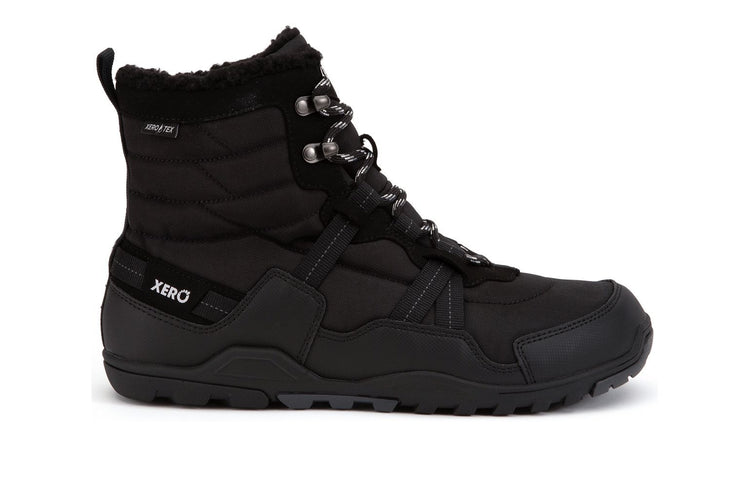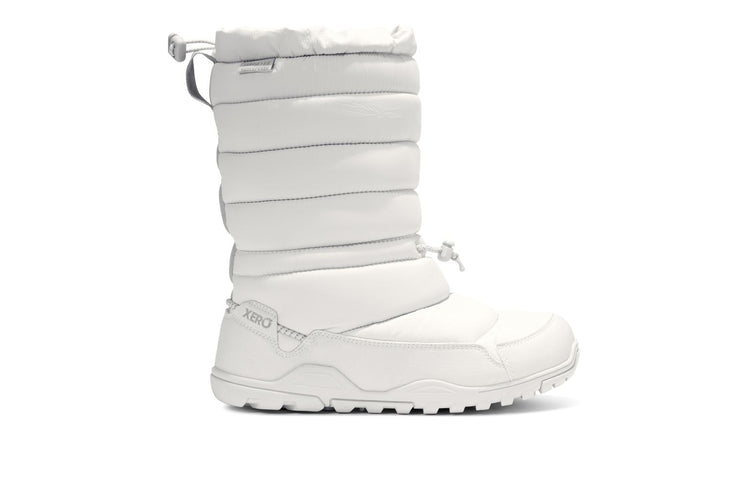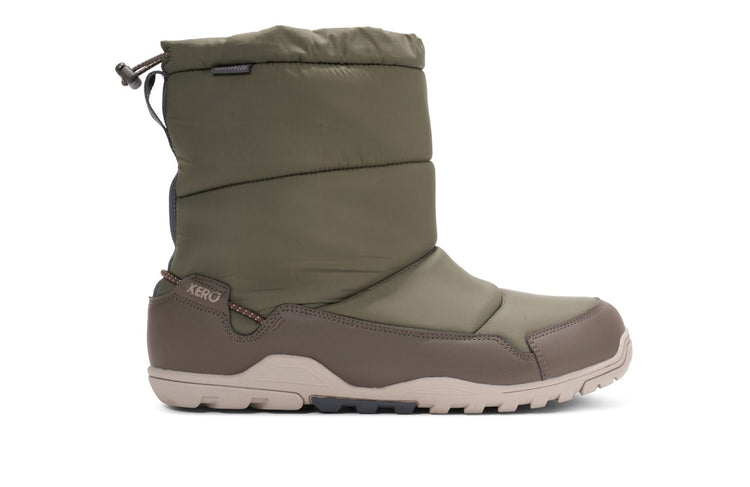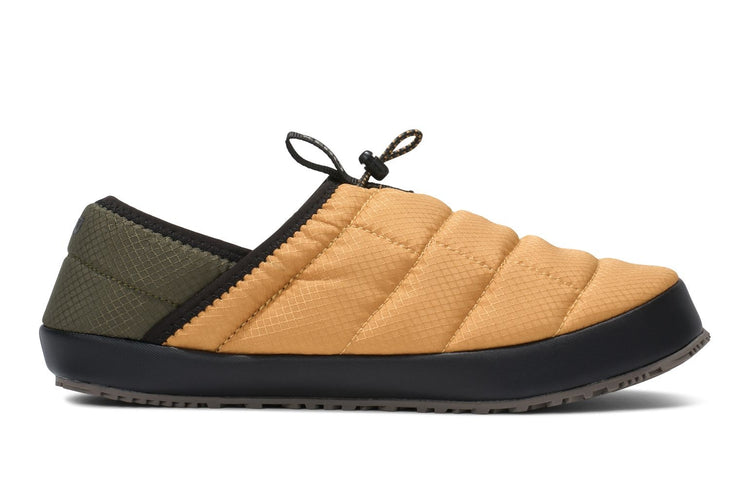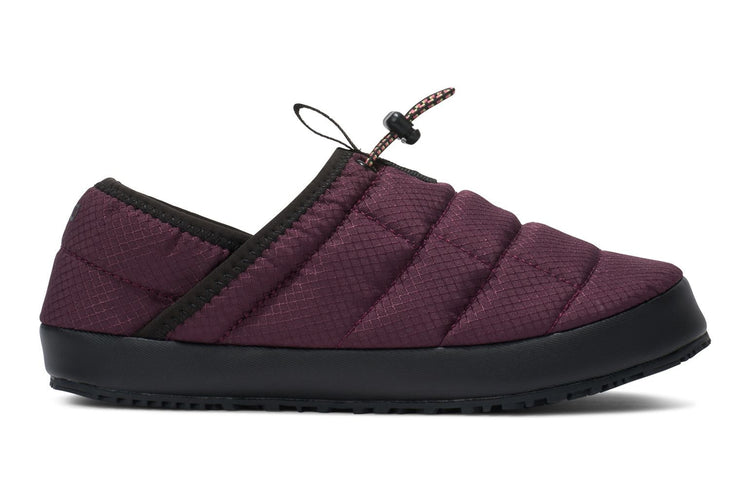latest News
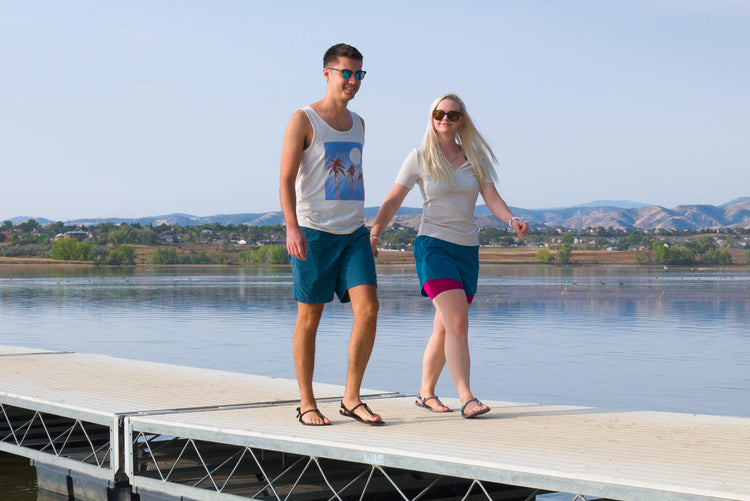
How to Make Huaraches
Ever since the publication of Christopher McDougall’s book, Born to Run, there has been an increased interest in the simple sandals worn by the Tarahumara, which he describes in his story. Called “huaraches,” the footwear of the Tarahumara are basic sandals created from the rubber tread of old tires and a bit of leather cord. Not to be confused with the fancy leather sandals that are also called huaraches, the sandals worn by this people group are the original minimalist running sandals. Members of the tribe are known to run incredible distances over rough terrain and gravel roads with nothing on their feet but these huarache sandals. Granted, the Tarahumara are not the first or only people to wear similar sandals. In fact, the oldest archeological find of a shoe is many thousands of years old, was found in Fort Rock, Oregon and looks quite familiar. Now, If you’ve read Born to Run, or otherwise heard about huarache sandals, maybe you’ve been itching to get your hands on a pair of your own minimalist running sandals. There are two ways you can do so. For the less adventuresome, Xero Shoes has created barefoot sandals that recreate the minimalist experience of the original huarache sandals. Find yours here. For those who are up for the fun of taking on a fun do-it-yourself project, you can make your own sandals. These instructions will give you the details you need to create your own DIY huarache sandals from scratch using our Xero Shoes Classic Kit with Vibram rubber. Or you can make some sandals with the only outsole made specifically for barefoot running sandals (yes, you can wear them for other activities than running) – either the 4mm Connect or 6mm Contact kit with FeelTrue™ rubber outsoles. Click here for instructions. (Find out more about our FeelTrue™ products here.) And, at the end of the instructions about making huaraches, you’ll learn one way to tie huaraches. If you’re adventurous and creative, you can find other tying styles here. You can also download a PDF of the instructions, below, by clicking here. Things you’ll need to make huaraches: Some sort of sole material. Again, we made our FeelTrue rubber to be the best combination of strength, flexibility, and barefoot feel for DIY huaraches sole material. Another good option is the material in our Classic kit, the 4mm Vibram Cherry. Something to lace the sole to your feet — about 60-72″ per lace (depending on your size). You can use leather lace, hemp cord, etc. We use 5/32″ polyester cord… it’s soft, durable, colorful and provides the right amount of support (too thin can hurt, too thick gets unwieldy). Piece of paper and a marker (like a Sharpie) — to trace your foot. Pencil — to transfer your foot template to the sole material. Strong scissors — to cut your tracing and the sole material. Leather punch — to make the lacing holes in the sole (NOTE: We do not recommend using a nail or knife to make the hole. Holes made that way tend to tear). You want the holes to be the same size, or slightly smaller, than your cord. We use a 1/8″ punch for our 5/32″ cord (the hole is 1/32″ smaller that the cord). We use this Lace Hole Punch. Note: Depending on the material you use, you could try drilling a hole (some Xero Shoes customers have done this with the Vibram Cherry sole). Lighter or match — to seal the ends of the lace, if you’re using polyester, nylon, other woven synthetic lace material. Step-by-step instructions for making Huaraches: Step 1 – Trace your foot Step on a piece of paper. Lean forward and put a bit of pressure on your foot so it flattens a tiny bit. Then, using a marker (like a Sharpie) held vertically, trace around your foot. You don’t need to get every tiny nook and cranny, and you’re not trying to get an EXACT measurement of the sole of your foot… in fact, by holding the pen vertically, you’re making a trace that’s slightly bigger than your foot, and that’s exactly what you want. Step 2 – Even out the tracing You want to smooth out the curves. For example, you want to make the toe area into a curve, rather than bumps for each toe. Also, I extend the area on the inside of the big toe and the ball of the foot a little bit (sometimes when you run, your foot slips to the inside, so you want to add a bit of extra space here). Step 3 – Cut out the tracing Cut around the tracing. That is, cut on the outside of the line you’ve drawn, rather than ON the line. Again, that little extra bit can help make sure the finished product is comfy. Plus, you can always remove material from your huarache sandals and make them smaller, but you can’t make them bigger, so err on the side of too big. Step 4 – Check your other foot Take your cut out tracing, flip it over, and step on it with your other foot. If your other foot fits in the cutout, then you’ll use just this one template. If your other foot is significantly different (especially if it’s bigger), repeat steps 1-3 on your other foot. The beauty of making your own huarache sandals is that you can make them to fit your unique feet. Click this picture to see a video of Steps 1-4 How to make Xero Shoes Barefoot Sandals Step 5 – Transfer the pattern to the sole material Place the cutout pattern(s) onto your sole material and trace around it/them with a pencil. If you only have one cutout pattern, remember to flip it over otherwise you’ll end up making 2 soles for the same foot! Step 6 – Cut out the soles If you’re using the 4mm Vibram material that comes with the Xero Shoes DIY huarache kit, you can use strong scissors for this. You’ll have to make small cuts towards the back of the scissors and work your way around the material. Step 7 – Mark the toe hole Step on your soles and, using a marker (I use the Sharpie from Step 1), put a dot between your first and second toe, right where the webbing between your toes is, and slightly closer to the second toe than right in the middle of the space between the toes. The reason for this is, when you wear your sandals running, your foot will want to shift toward the inside. By putting the hole closer to the second toe, your foot stays in place better. NOTE: It’s much easier to have someone else make this and the next 2 marks while you just stand on the soles. Step 8 – Mark the inside ankle hole Still standing on the sole, place the pen vertically, just in front of your ankle bone, and make a mark on the sole at that point. Step 9 – Mark the outside ankle hole Still standing on the sole, you’ll notice that there’s a place where your foot makes less contact with the ground. Make a mark on the outside edge of the sole at that point. At this point, you should have marks for three holes. Step 10 – Punch the holes The size of the hole you make depends on the material you use for the laces. For example, when I use 3/16″ polypropelene/nylon for the laces, I make a 1/8″ hole. You’ll want to use a leather punch (I use either a rotary leather punch or the Lace Hole Punch we provide with Xero Shoes). NOTE: I do not recommend using a nail or knife to make the holes. Doing so can often leave a hole that’s not clean, leading to tearing the sole. Punch out the toe hole exactly on the mark you made. For the two ankle holes, punch a hole about 1/4″ in from the edge, in line with the marks you made in steps 8 and 9. Step 11 – Prepare the laces Depending on your lace material, you may need to prepare the ends in order to get them through the holes. For example, if you’re using leather, you may want to cut the ends of lace into a point. If you’re using polypropelene/nylon, heat the ends with a flame and carefully (so you don’t burn yourself) seal and shape the ends to be as pointy as possible. Step 12 – Thread the lace through the toe hole and secure it Push one end of the lace through the toe hole, from the top to the bottom. A traditional option is to make a knot in the lace, on the bottom side. I typically use a “Figure 8 knot”, pictured here. If you’re using polypropelene/nylon or polyester lace, you’ll want to run the flame from a lighter (or match) under the knot, to melt the nylon slightly, then press the knot together to seal it and flatten it a a bit. Lately, though, I’ve replaced the knot with a lower profile “Lace Bead.” Click this picture to see a video of Steps 5-13 How to make Xero Shoes Barefoot Sandals How to make Xero Shoes Barefoot Sandals Step 13 – Thread the ankle holes Pass the lace through the outside ankle hole first, from top to bottom. Then pass the lace through the inside ankle hole, also from top to bottom. Follow the pictures to get it correct… you want the lace to “lock in” around the holes. Click this picture to see a video of how to tie huaraches How to make Xero Shoes Barefoot Sandals Step 14 – Put your foot in and tie the huaraches There are 2 common ways to tie huaraches running sandals. One is the more traditional “toga-style.” And the other (which I learned from “kicksock” on the Google Barefoot Running group) is more stylish and allows you to slip the huarache on and off without retying. There’s no easy way to describe the tying methods, so follow the pictures/videos. Oh, and you may want to check out these new cool, decorative, and stylish ideas about how to tie huaraches and what to do with “leftover lace.” The “slip-on” method from a 1st person view: How to make Xero Shoes Barefoot Sandals Step 15 – Go out and ENJOY your new huaraches! Remember, though, to take it easy at first. If you’re not used to going barefoot, especially running barefoot, you’ll be putting more stress on your muscles and skin than you’re used to. Work your way into your huaraches slowly. And if you come up with cool, new tying ideas, put them on our Tying Page. Quick Questions and Answers I have found I often get a couple of questions when I’m talking about DIY huarache sandals. Maybe they’re your questions, too. Can you really run in huaraches? I get it. We’re used to running in shoes with thick soles and lots of padding. But yes, you can absolutely run in huaraches and I do all the time as do many tens of thousands of Xero Shoes customers. Remember, these aren’t flip flops. Unlike a casual sandal, huaraches fit snugly and securely to your feet. It is important to realize, however, that you are going to need to learn to run differently. One of the things Christopher McDougal talks about in his book (which I mentioned at the beginning of this post) is the relationship between footwear and running style. If you want to know more, I have written a post that tells you everything you need to know about how to run barefoot or in minimalist shoes like huaraches. I like the idea of minimalist footwear. Is there something with a bit more to protect my foot? After making your own DIY minimalist sandals, you may wonder if there are more minimalist shoe options out there. Absolutely. Huraches are associated with the barefoot style of walking or running that emphasizes minimal footwear that allows your feet to move and function naturally. Barefoot sandals, of which huaraches are an example, are just one type of footwear available. You can also wear barefoot shoes or even a pair of barefoot boots. Xero Shoes has models designed for running as well as walking & hiking. They are perfect for wet or cold weather or any time you just want a bit more coverage or protection. You can check out our entire collection here.
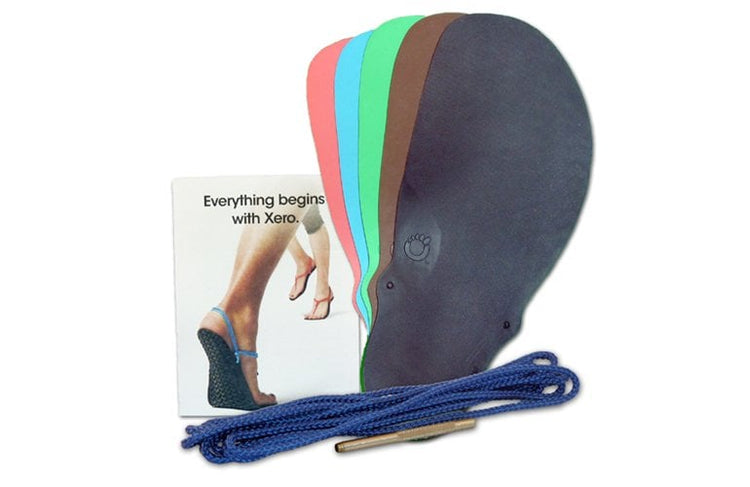
Huarache Running Sandals of the Tarahumara - Kits and Custom huaraches
Okay, so the big question is, "WHY use huarache, the Tarahumara running sandals?" The answer is pretty obvious, but there are some important-yet-surprising pieces to the puzzle. The obvious answer about huarache is: It's the closest thing there is to barefoot running, without some of the hazards of barefoot running. Namely, you're adding a layer of protection to your feet that bare skin simply can't give you, no matter how well conditioned your feet are. Especially with the 4mm Vibram Cherry sole material we use in our huarache kits and custom huaraches, you get what I like to call "better-than-barefoot." The soles are so flexible it's like having nothing on, so light, you barely notice them... except it's blissfully clear that you're not getting scraped up, cut up, scratched up and dirty like you would if it was just your tootsies on the ground. That said, I'm not going to say "Don't run barefoot and run with huarache running sandals instead!" Why not? Well, because running barefoot gives you more feedback than running with ANYTHING on your feet. If you want to know how efficient your form is, go barefoot and you'll know (that is, if it hurts, you need to change something!). If you want to know if you could be running lighter or easier, go barefoot and you'll find out (did I mention: if it hurts, you need to change something?). Conversely, putting ANYTHING on your feet, including huarache sandals, can mask some improper technique, give you the illusion that you're better than you are and, possibly, lead to overtraining. Especially at first. That said, since it takes awhile to develop that new barefoot running technique, and since it takes a while for your feet to get conditioned (btw, they do NOT get calloused), I recommend a mix of barefoot and huarache running. In fact, what I often do is carry my huaraches with me when I go out barefooting. And if my feet start to get a bit sore, and I'm still a ways away from home, I'll slip on my huaraches for the 2nd half of the run. Or, I'll warm up in my huaraches, and then slip 'em off (using the method of how to tie huarache sandals here), and take off from there. Oh, if I'm on serious trails -- and by serious, I mean a lot of rocks, twigs, etc. -- then it's all huarache, all the time.
Can you run long distance in sandals? You bet!
There's nothing I find funnier than when I'm running in my Xero Shoes sandals and someone asks, "Can you run in those?"Uh... you're WATCHING me run in them!Well, when I tell non-runners that some people run 100k ultramarathons in huaraches, they're incredulous.Now I don't need to explain anything, I can just show this video of the La Ruta Run, a 50k and 100k race that took place in Costa Rica. Arguably, La Ruta is the hardest trail ultramarathon in the world.Check it out... but be careful. This video will make you want to run La Ruta!Oh, and look at the 4:18 -ish mark for Jonathan Sinclair and Melissa Gosse running La Ruta in their Xero Shoes! Hear them talk about running La Ruta here.And check out the women running in their cheap plastic sandals!
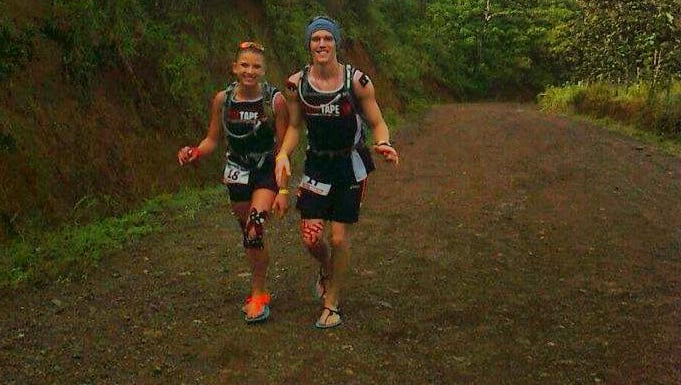
Running with the Tarahumara in Costa Rica
Want to run with the Tarahumara (the Mexican tribe featured in Chris McDougall's bestseller, Born to Run)? Well, if you can't make it to the Copper Canyon, or anywhere else for that matter, here's the next best thing. Ultra runners Jonathan Sinclair and Melissa Gosse went to Costa Rica for La Ruta 100k, arguably the hardest trail ultramarathon in the world. About a dozen Tarahumara runners were there and Jon and Mel got to spend the better part of a week hanging out and running with them -- as well as swapping huaraches and Xero Shoes, eating, drinking, and much more. They'll be sharing pictures and stories as well as giving great tips about barefoot running, minimalist running, ultramarathon training, and anything you can think to ask about. You can also click on this link to watch live video chat we had with them a few months ago.
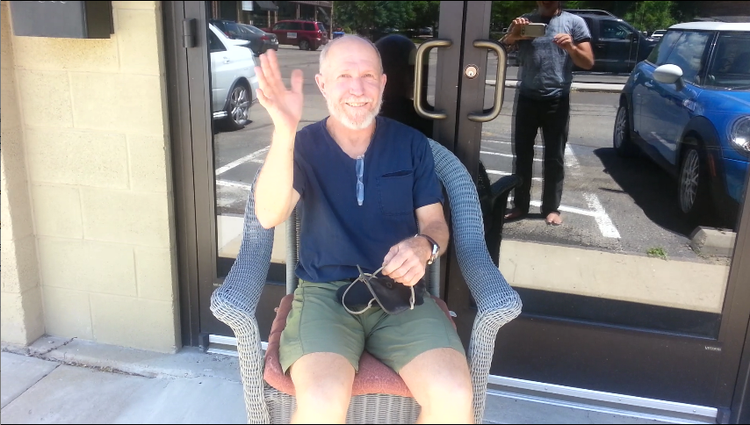
Barefoot Sandals, Triathalons, and Speed
I got a call today from someone asking: I'm a triathlete, and I love the idea of barefoot running, or using your sandals... but how quickly can I put these on and then run with them? The time to transition between biking and running is important to me. And once they're on, will they fall off? Good questions. There are a number of "slip-on/slip-off" tying styles you can use with Xero Shoes (as well as tying styles that you have to lace up every time you wear them). When you have the tension correct, there's no problem sliding them onto your foot and having them stay securely for a run, walk, hike, yoga class, or whatever you're doing. And it takes just a second to put 'em on. I hold the knot at the top of the sandal in one hand, hold the heel strap in the other, slide my foot all the way in, and then flip the heel strap over my heel. Simple. To prove it, here's a quick video of our former Customer Service Manager, Bill Babcock, slipping on his Xero Shoes. Bill is also an ultramarathoner who knocks off 100+ miles/week wearing his Xero Shoes with an ultra-minimalist tying, slip-on/slip-off tying style. In fact, in this video, Bill is wearing shoes with the MOST minimalist tying style ever created, which you can find here
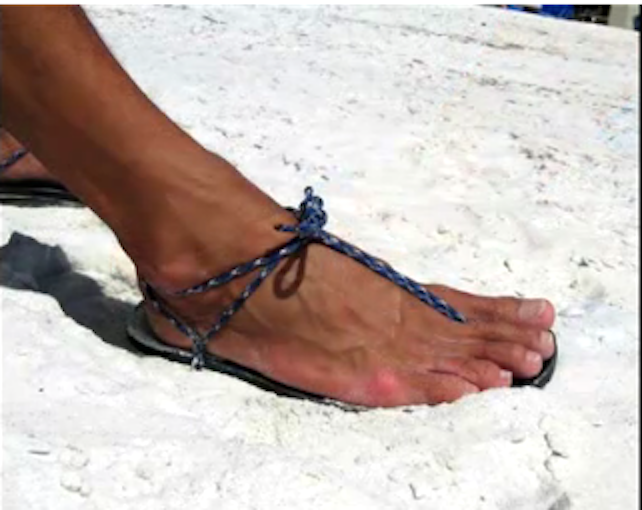
Raymond's Double-Thong Running Sandal Tying Method
Raymond Mack developed this nice thong styleOnce you get the tension just right, you slip 'em on and off in a second. People use this tying style for everything from walking to running marathons.First, a tying tip:Lacing tips:Raymond's Double-Thong Tying StyleSince there's exposed lace under your foot, I recommend coating that part of the lace with Shoe Goo for added protection.Step-by-Step instructions coming soon!
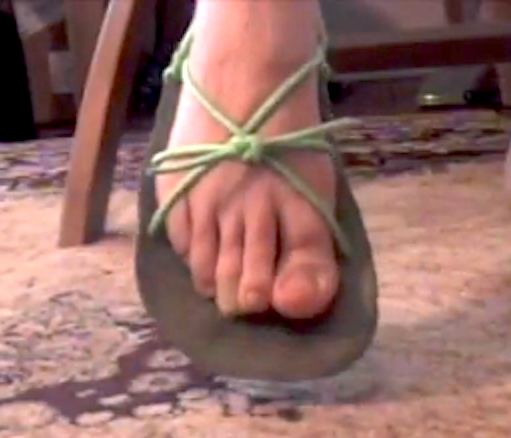
Sonja's No-Toe huarache running sandal
Sonja came up with this tying style which has no toe strap or knot under your foot.You can slip these on and off in a moment. BTW, you won't end up with a big flap in the front... that's just what happened in the picture ;-)First, a few tying tips and notes:Lacing tips:Sonja's No-Toe Tying StyleThis video makes a reference to our Classic Kit with our old name, Invisible Shoes... you can do this with our FeelTrue outsoles which will be much better.Also, you can do the same lacing style, but "rotate" it so the knot ends up behind your heel!And since there's exposed lace under your foot, I recommend coating that part of the lace with Shoe Goo for added protection.Step-by-Step instructions coming soon!
Xero Shoes Barefoot Sandals in COLOR!
Houston, we have color! I am extremely happy and proud to announce that you can now get Xero Shoes in 4 WAY COOL colors. And to celebrate, you can also save 20% if you order by October 2nd! In addition to our Coal Black, you can now get Mocha Earth, Electric Mint, Boulder Sky, and Hot Salmon. Combine those with our different lace colors... Well, here are a few combinations that you'll see around our office: Lena in her Mocha Earth with matching brown laces and a bunch of Brass Beads. Our office ultra-runner (and customer service manager), Bill, in Electric Mint with Purple laces (he puts 80-100 miles a week on these!) Steven, taking inspiration from an 8 year old customer who was the first one to wear non-matching laces, in Boulder Sky with White laces and a Hand Pendant (on the left) and Hot Salmon with Red laces (right). These new colors come in both Connect 4mm and Contact 6mm styles. And you can get them as kits or custom-made. Click here to order your Xero Shoes Colored Barefoot Sandals
4 Reasons NOT to Run Barefoot
[This post is guest-authored by our friend Rob Raux from www.shodless.com]Being barefoot and running barefoot is a blissful and consciousness-expanding endeavor. The feedback supplied from the ground is powerful enough to force even experienced runners to try it for only a mile or so, if they make it that far. Barefoot running, however wonderful, should not be subscribed to dogmatically.There are myriad resources available expounding on the benefits of being barefoot. Most of their reasons, methods, and warnings have merit. Unfortunately many of them sway to heavily towards the one-size-fits-all solution.Experiencing life unshod isn’t always the best option. Putting on a pair of huaraches or other minimalist shoes can serve a number of beneficial purposes: Technical Trail Running. Many people worry that the rocks, twigs, and roots on a trail make barefoot trail running impossible. Not true. First, you use your eyes and avoid what worries you. Second, your feet aren't rigid and can grab and grip and mold around many "obstacles."That said, while there’s nothing better than feeling the grass beneath your feet, having your heel land on an embedded rock leaves something to be desired. To be more specific, it could leave behind a bruise that will take at least a week to heal.That doesn’t include the chance of damaging the fatty tissue which protects your heel bone from impacting the ground. If any of this sounds painful, trust me, it’s worse than you’re picturing.A trail has hazards which you may not wish to risk if you're still an inexperienced barefooter. When a single false step means a week of no running, it’s just not worth it to be ideological about keeping yourself unshod. Additional mileage Your body may be able to take additional mileage, but the bottoms of your feet may not be ready to support it yet barefoot. Now, if you're looking to become a better barefoot runner, this is good news -- when your skin tells you to stop... STOP! Over time it'll adapt (not callous) and you'll be able to put in more miles.Until then, there’s nothing wrong with protecting your precious footsies, but only if you know your form is correct. If you are transitioning from shoes to barefoot and have yet to perfect the change from heel strike to mid foot strike or a forefoot strike, don’t ask for trouble by adding more miles in a minimalist shoe. You’ll find yourself injured promptly and thoroughly.If you are comfortable in your stride, you will find that your feet hit a natural point where further barefoot running may only lead to blisters (that usually means your form has broken down and you're pulling/pushing the ground, instead of placing/lifting). In these cases, adding a protective covering will give you the opportunity to add those additional miles you crave. Racing A foot covering increases your margin for error while running. Proponents of barefoot running tout the pain feedback loop as a beneficial aspect. Any foot covering blocks the pain receptors, which allow you to cause more damage to your body.In a race, this can be a necessary evil. A reduced pain feedback loop allows you to run a longer duration of more intensity. The covering may also absorb some of the mistakes you may have made barefoot (stepping on that rock in your mental fatigue).There’s obviously a very fine line to be ridden here, and one that you can certainly go too far with. Go with the least amount of covering possible and you should be able to dampen and absorb just the minimal amount of error to improve your results.I'd love to say, "If you're not comfortable running that distance, don't race that distance." But I know how some of us... I mean, YOU... can be ;-) The bitter cold Mother nature yields to no man. Don’t even think about getting the best of father winter.If you live in a climate that has a true winter, you know what frostbite feels like. Now try running barefoot.Amazingly, there are folks who do it, and enjoy it. And check out Steven shoveling snow in his huaraches. Frankly, I’ve tried it and even I think that’s crazy. Most people are going to need something to keep their feet protected from the elements (wind, snow, slush, etc.). Each person has a different tolerance, which will adapt as they get more comfortable with the colder weather.When dealing with the elements it’s best to be safer than pull up limp 3 miles from your house and walk the rest of the way home. The content of this post does not constitute and is not intended to be a substitute for professional medical advice, diagnosis or treatment. Always seek the advice of a physician or other qualified health provider with any questions or concerns you may have about your health or a medical condition.
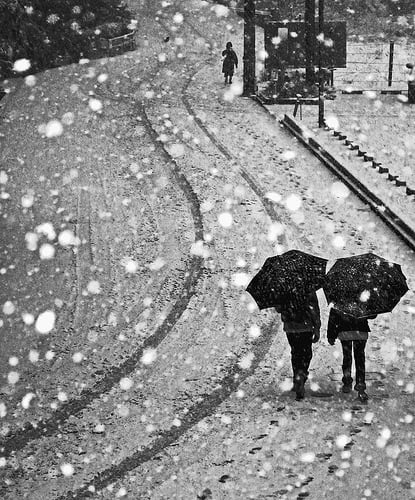
Barefoot in the Cold
Here in the Northern Hemisphere, Winter is upon us. And people email me every day asking what to do if they want to be barefoot or minimalist in the cold weather. While I've written about running barefoot in the cold before, this is a whole new thing ;-)First let me say: DO NOT TRY THIS AT HOME. In other words, don't go out and try to imitate me.I've been barefoot running for over 2 and a half years, and haven't worn a pair of real shoes for more than a total of 3 days in that time.Last winter, I thought, "I'll keep my barefoot shoes on until it seems too cold." And the next thing I knew, it was Spring!So, clearly I've acclimated. And that's not too surprising. Humans (and our hominid cousins) lived in cold climates without shoes for a LOOOONG time. So, we're kinda wired for it, if we give ourselves time to adapt.Here's the video I just shot, after we got 18"+ of snow in Boulder. It's about 15 degrees out.What I did is this: Outside for about 10 minutes Inside to dry off my feet and warm them for 5 Outside for another 10 Inside to dry and warm for about 3 Outside for 30+ minutes... by this time my body temp had gone way up. I was sweating quite a bit. And my feet felt totally warm. Not numb. Warm. When I got inside after finishing the shoveling, they didn't have to thaw or warm up or anything. Lena wants me point out that you should check the Wiki about frostbite so you don't do something stupid and get hurt ;-)The content of this post does not constitute and is not intended to be a substitute for professional medical advice, diagnosis or treatment. Always seek the advice of a physician or other qualified health provider with any questions or concerns you may have about your health or a medical condition.
The little lie of barefoot running
As the barefoot running boom continues to explode, it’s important that we debunk the mythology that’s sprung up and face some facts. And perhaps the most obvious fact is this: If you run with anything between your skin and the ground, you are not barefoot runner. Let me say that again. If you wear Vibram Fivefingers, New Balance Minimus, Merrell Trail Gloves, Altra Adams, Vivobarefoot shoes, Newtons, Inov8 shoes, even our Invisible Shoes huaraches running sandals, you are not a barefoot runner. I don’t care if your previous shoes were padded stilts and your new shoes are a “zero-drop” natural movement minimalist shoe, if you’ve got something on your feet you’re not barefoot running. Barefoot running means that you run in bare feet. Period. Now, don’t get me wrong, I’m not saying that if you’ve just spent $125 on your Vibram Bikilas you need to throw them away, or that if there’s a barefoot running Meetup you can’t be part of the cool clique. And I’m not saying everyone needs to be barefoot. And, clearly, I'm not saying "don't buy Xero Shoes" ;-) But it’s important that we differentiate actual barefoot running from minimalist running. Why? Because more often than some would like to admit, barefoot running and minimalist running do not produce the same results. The promise of barefoot running is that the sensations you get when your skin contacts the ground — often known as pain — teach you proper running form. That is, if you change your form to make the pain go away, you’ll have a more efficient, lighter, easier stride, and you’ll be able to run pain-free for life. Anything that you put on your feet reduces the amount of sensation you feel and can interfere with the feedback loop that barefoot running gives which produces those benefits. Again, I’m not saying that you don’t get feedback from minimalist shoes. You certainly get more than you do when you’ve got 2″ of padding in your Nike I Can’t Feel The Grounds. As the developer of Xero Shoes, I know hundreds of people who switched to our sandals, improved their barefoot running form, eliminated life-long aches and pains, and now enjoy running ultra-marathons. As one of our early customers put it, "Xero Shoes are just like being barefoot... if they covered the world in a thin layer of comfortable rubber." But, I’ve also met a LOT people who bought a pair of Vibrams or Merrells (or any other minimalist shoe), soon became injured, and now tell everyone they know that “barefoot running” is dangerous… and they’ve never run barefoot! I’ve been on a number of barefoot running panel discussions and, inevitably, there will be some number of doctors, physical therapists, podiatrists and other medical professionals who say, smugly, “Hey, stick with this barefoot running thing. All the people getting hurt by doing it are putting my kids through college!” Before they can finish chuckling, I fire back: Me: “You know, of course, that all you guys made the exact same joke 40 years ago when running shoes were invented, right? And you know that people who have no problems running barefoot — and ones who get cured of injuries by running barefoot — will not come to see you, right?” Them: “Uh…” Then I pull out the bigger guns: “And when a patient tells you they got hurt from barefoot running, did you ask if they were actually in bare feet? Did you check to see if they simply over-trained by doing too much, too soon? And, maybe most importantly, did you take a video of them running so you could analyze their form and see if they were simply using the same injury-producing mechanics they used when they wore shoes? Or did you see if they were trying to stay on their toes, putting extra strain on their calves and Achilles, because they have a mistaken ideas about proper barefoot form?” Them: “Uh…” Barefoot running is more than switching to a minimalist shoe. And it’s more than simply removing your shoes. Don’t believe me? Go to a barefoot running event, find the people in their minimalist shoes, and see which ones are still landing on their heels, as if they’re still in motion controlled running shoes. In fact, be on the lookout for runners who are actually barefoot doing the same thing! Some of us are either unable to feel those important form-changing sensations, or unable (without coaching) to actually make form changes in order to find a painless way of moving. For an example of this, check out Pete Larson's video of the recent NYC Barefoot Run. Most of the VFF wearers, and a handful of barefoot runners are still landing on their heels. (I was there and noticed the same thing, but I didn't have the brains to video tape it... so, Thanks, Pete!) Let’s wrap this up with a wish: If you’re one of those “barefoot” runners who has never run barefoot, I can’t encourage you enough to try it. Don’t think there’s some transition you need to go through before you’re “ready.” Ironically, the best advice I can give you is: Just Do It! Get on a good clean hard surface (a bike path is great, streets work too) and go for a run. Listen to your feet, if they hurt, try to move in some different way so that they don’t. And if you can’t figure out how, then stop and try again another day. Don’t think you need to build up callouses; none of us who successfully run barefoot have any (they’re another sign that you’re doing something wrong). If you can find a coach or some training, get some guidance. Report back here with what you discover. The goal is not to be barefoot all the time. The goal is to be flexible. To be able to run comfortably, easily, and enjoyably under any circumstance. To know when barefoot is the best option and when something under your feet is called for. I wear my Xero Shoes for all my walking, hiking, and getting into restaurants. I'm barefoot for a lot of my sprinting training. But, hey, I still wear running shoes, too… when I have to shovel a 2′ Colorado snowfall. The content of this post does not constitute and is not intended to be a substitute for professional medical advice, diagnosis or treatment. Always seek the advice of a physician or other qualified health provider with any questions or concerns you may have about your health or a medical condition.
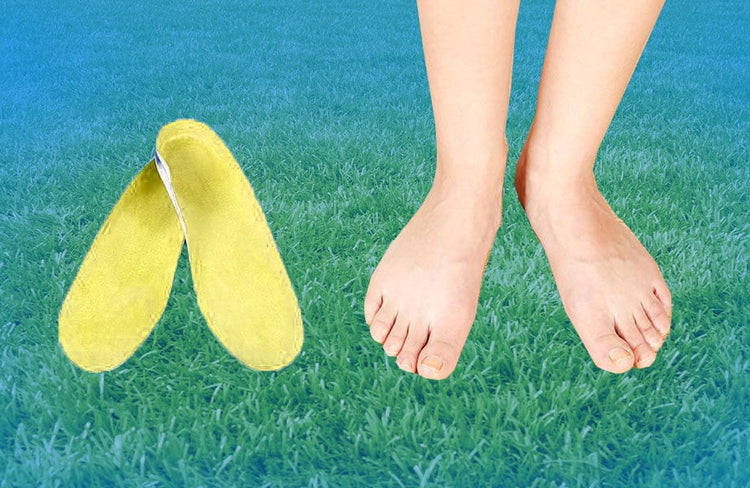
Orthotics vs. Barefoot Running
The only time I've worn anything other than my huaraches or my sprinting spikes in the last 16 months has been the 3 times I put on my old running shoes... so I could shovel snow. Those shoes have my $200 orthotics in them. And each time I've put them on, I have the same thought, "Geez, my foot can't even move. How did I wear these?" Often, when I'm out and about, someone will see my Xero Shoes and say, "Those look great, but I can't wear them. I need orthotics." "I used to think the same thing," I reply. "But let me ask you something. When has putting a cast on a limb and immobilizing it made it stronger?" "Well... never," they say, not wanting to admit the obvious fatal flaw in their reasoning. "Right. So you put a cast on your foot, called an orthotic, it gets weaker. Then you need a new cast to handle how much weaker you've gotten, and then... Oh, by the way," I mention, "you had your orthotic made while you were standing on a flat surface, didn't you?" "Yes." "Look at the shape of your shoe. Is it flat?" "Uh... no." "Because of how the shape of the shoe influences the way you move, you really need a different orthotic for each shoe. And it needs to be fitted based on how you move in that shoe, not how you stand, motionless, on the ground." "Hmmm..." I can see the glimmer of realization in their eyes. Well, now I have new ammunition in my anti-orthotic holster, an article in the New York Times by one of my favorite science writers, Gina Kolata: Close Look at Orthotics Raises a Welter of Doubts Let me give you a few highlights: Shoe inserts or orthotics may be helpful as a short-term solution, preventing injuries in some athletes. But it is not clear how to make inserts that work. The idea that they are supposed to correct mechanical-alignment problems does not hold up. Kinda sums it up, yes? Just wait, there's more. Gina interviews the top orthotics researcher, Benno M. Nigg, who says this about a man named Jason's flat feet: There is no need to “correct” a flat foot. All Jason needs to do is strengthen his foot and ankle muscles and then try running. without orthotics. Who knew? ;-) Well, *I* did... I've had really flat feet my whole life... until I started running and walking barefoot. Now I have some arch in my foot. BTW, I'm legally required to say that barefoot running shoes and sandals are not a medical treatment, I'm not a doctor, nor am I able to promise that by going without shoes you will develop arches in your feet. That said, do some Googling and you'll hear a lot of similar stories. Do with that what you will. Sometimes people with high arches give me the same story. "I need support because my arches are so high." Just because they're high, doesn't mean they're strong, especially if you've been supporting them all your life... remember the cast analogy. Now I'm not going to say that orthotics don't do something. But the question is: What do they do? How do they do it? And are they really helping? Dr. Joseph Hamill responds, in Gina's article: I guess the main thing to note is that, as biomechanists, we really do not know how orthotics work. Results from his studies cause Dr. Nigg to add: There was no way to predict the effect of a given orthotic. Hey, I'm not here to make anyone throw away their high-priced foot supports even though I haven't worn mine since 2009. But I am here to inspire a bit of wondering, a bit of curiosity, a bit of common sense, and a bit of critical thinking. Man lived without orthotics for a LOOOONG time. That doesn't mean they couldn't have benefited from them. But it means they got along without them. Maybe you can too. It doesn't cost much -- in time or dollars -- to set up an experiment for one. The content of this post does not constitute and is not intended to be a substitute for professional medical advice, diagnosis or treatment. Always seek the advice of a physician or other qualified health provider with any questions or concerns you may have about your health or a medical condition.


